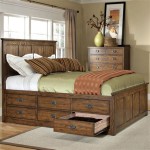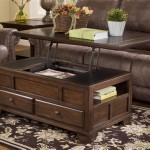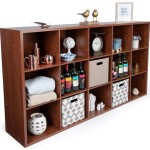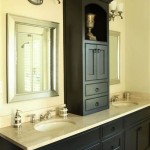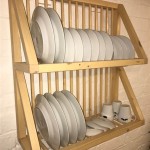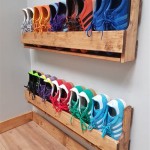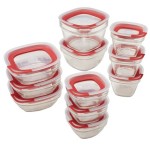DIY Single Bed Frame With Storage: A Singaporean Guide
In Singapore, optimizing space is crucial, especially in smaller apartments and HDB flats. A DIY single bed frame with storage offers a practical solution for combining sleeping arrangements with much-needed storage. This article provides a comprehensive guide to building a single bed frame with integrated storage, tailored for the needs and preferences of Singaporean residents. Factors such as material selection, design considerations, space constraints, and building techniques will be discussed to empower individuals to create a functional and stylish piece of furniture.
Before embarking on the project, careful planning is essential. Determine the exact dimensions of the single mattress that will be used. Standard Singaporean single mattresses generally measure 91cm x 190cm. The bed frame's internal dimensions should slightly exceed these measurements to allow for easy placement and removal of the mattress. Consider the desired height of the bed frame; this will influence the amount of storage space available beneath it. A higher bed frame facilitates larger storage compartments but may not be suitable for individuals with mobility issues or for children. Once the dimensions are finalized, create a detailed sketch or use a 3D modeling program to visualize the design. This blueprint will serve as a guide throughout the construction process.
Material selection is another critical aspect. Plywood, solid wood, and Medium-Density Fiberboard (MDF) are common choices for bed frames. Plywood offers a balance of strength, affordability, and workability. Solid wood, while more expensive, provides superior durability and aesthetics. MDF is a smooth, uniform material suitable for painting or veneering but may be less resistant to moisture. Consider the humidity levels in Singapore and choose materials accordingly. Opt for treated wood to prevent termite infestations, a common concern in Singaporean homes. Hardware such as screws, hinges, drawer slides, and handles should be of good quality to ensure the longevity and functionality of the bed frame. Purchase these materials from reputable hardware stores in Singapore, taking advantage of any available promotions or bulk discounts.
In Singapore, space constraints often dictate design choices. A single bed frame can be adapted to maximize storage potential in various ways. Drawers can be incorporated along the sides or front of the bed frame, providing easy access to stored items. Alternatively, lift-up storage compartments can be created, allowing for concealed storage of larger items such as bedding or seasonal clothing. A combination of drawers and lift-up storage can be implemented to cater to diverse storage needs. Consider incorporating shelving at the headboard or footboard for books, decorative items, or electronic devices. These features can transform the bed frame into a multi-functional piece of furniture, ideal for maximizing space in small apartments.
Design Considerations for Optimizing Space and Functionality
The design of the bed frame should prioritize both functionality and aesthetics. Consider the overall style of the room and choose a design that complements the existing décor. A minimalist design with clean lines and a neutral color palette can blend seamlessly into various interior styles. Alternatively, a more elaborate design with decorative accents can create a focal point in the room. When designing the storage compartments, consider the types of items that will be stored. Shallow drawers are suitable for clothing, while deeper compartments can accommodate larger items. Implement dividers or compartments within the storage spaces to keep items organized and prevent clutter. Ensure that the drawers or lift-up compartments operate smoothly and quietly.
Ventilation is an important consideration, especially in Singapore's humid climate. Incorporate ventilation holes or gaps in the storage compartments to prevent moisture buildup and mildew growth. These openings should be strategically placed to allow for adequate airflow without compromising the structural integrity of the bed frame. Consider adding a moisture barrier to the inside of the storage compartments to further protect stored items from humidity. Proper ventilation will help to maintain the quality of stored items and prevent unpleasant odors.
The choice of bed frame legs or the base is also crucial. Legs can elevate the bed frame, providing extra clearance for cleaning and ventilation. A solid base, on the other hand, can offer added stability and support. If using legs, ensure that they are strong and evenly spaced to distribute the weight of the bed and its occupants. Consider adjustable legs to compensate for uneven flooring. A solid base can be constructed from plywood or solid wood and should be securely attached to the bed frame. Reinforce the corners and edges of the base to prevent sagging or warping over time.
Safety is paramount when designing and building a bed frame. Ensure that all edges and corners are rounded or sanded smooth to prevent injuries. Avoid using sharp or protruding hardware. Use non-toxic finishes and adhesives to protect the health of the occupants. Reinforce the bed frame with corner braces and supports to ensure its structural integrity. The bed frame should be able to withstand the weight of the mattress and its occupants without sagging or creaking. Regularly inspect the bed frame for any signs of damage or wear and tear and make necessary repairs promptly.
Step-by-Step Construction Guide
This section outlines the general steps involved in constructing a DIY single bed frame with storage. Specific instructions may vary depending on the chosen design and materials. Always refer to the detailed plan created earlier in the process. Remember to prioritize safety and use appropriate personal protective equipment, such as safety glasses and gloves.
Step 1: Cutting the Materials Using the detailed plan as a guide, cut all the necessary pieces of wood to the specified dimensions. Use a circular saw, jigsaw, or table saw for accurate cuts. Label each piece to avoid confusion during assembly. Sand the edges of each piece to remove any splinters or rough spots. At this stage, it’s important to re-check the plan and the cut pieces to make sure that the numbers are aligned correctly and that nothing is missing.
Step 2: Assembling the Frame Assemble the main frame of the bed using screws, wood glue, and corner braces. Ensure that the frame is square and level. Reinforce the joints with additional screws or clamps. Allow the glue to dry completely before proceeding to the next step. This process is the backbone of the whole project. The frame must be assembled to withstand the weight of the mattress and the users.
Step 3: Building the Storage Compartments Construct the drawers or lift-up compartments according to the design. Assemble the drawer boxes using screws, wood glue, and drawer slides. Install the drawer fronts and handles. For lift-up compartments, install hinges and support mechanisms. Ensure that the drawers or lift-up compartments operate smoothly and quietly. This stage will be time-consuming as a lot of small parts are involved but will be a rewarding experience once completed.
Step 4: Attaching the Storage Compartments to the Frame Attach the drawers or lift-up compartments to the main frame. Ensure that they are securely fastened and aligned properly. Test the functionality of the storage compartments to ensure that they open and close smoothly. Make any necessary adjustments. This process needs patience and attention to detail.
Step 5: Adding the Bed Slats or Platform Install the bed slats or platform to support the mattress. Bed slats should be evenly spaced and securely attached to the frame. A solid platform can be constructed from plywood and should be adequately supported to prevent sagging. Choose the method best suited to the overall design and ensure proper ventilation. Usually, the slats are more comfortable because it is better at weight distribution.
Step 6: Finishing and Painting Sand the entire bed frame to create a smooth surface. Apply a primer and then paint or stain the bed frame to the desired color. Allow the finish to dry completely before using the bed frame. Apply a clear coat to protect the finish and enhance its durability. Check for imperfection and remedy it accordingly.
Addressing Common Challenges and Solutions
DIY projects often present unforeseen challenges. Building a bed frame is no exception. One common issue is uneven flooring, which can cause the bed frame to wobble. This can be solved by using adjustable bed frame legs or shimming the legs with pieces of wood. Another challenge is ensuring that the drawers or lift-up compartments operate smoothly. This can be addressed by using high-quality drawer slides and hinges and by carefully aligning the compartments during installation. If the wood splits or cracks during assembly, use wood filler to repair the damage and reinforce the area with additional screws or braces.
Another potential challenge is ensuring proper ventilation within the storage compartments. This can be addressed by incorporating ventilation holes or gaps into the design. Consider using breathable materials for the lining of the storage compartments to further promote airflow. Dehumidifiers can also be used in the room to reduce humidity levels. Mold and mildew growth can be prevented by regularly cleaning the storage compartments and by avoiding storing damp items inside.
Furthermore, Singaporean residents may face challenges related to sourcing materials and tools. Online marketplaces and hardware stores offer a wide range of materials and tools at competitive prices. Consider renting specialized tools, such as circular saws or routers, to save money. Participate in online forums or workshops to learn from other DIY enthusiasts and gain valuable tips and techniques. Local hardware stores often offer workshops on basic carpentry skills. These resources can help to overcome common challenges and ensure the successful completion of the DIY bed frame project.
Building a DIY single bed frame with storage in Singapore offers a rewarding and cost-effective way to optimize space and create a personalized piece of furniture. By carefully planning the design, choosing the right materials, and following the step-by-step construction guide, individuals can create a functional and stylish bed frame that meets their specific needs and preferences. Addressing common challenges and utilizing available resources will further enhance the success of the project. This endeavor improves the aesthetics and functionality of the living space and gives the satisfaction of creating something useful and personalized.

Aube Wooden Drawer Storage Bed Frame Japan Size Furniture Singapore Bedandbasics

Single Beds Super Wood Storage Custom Kids Picket Rail Sofas Furniture

Aube Wooden Drawer Storage Bed Frame Japan Size Furniture Singapore Bedandbasics

Aube Wooden Drawer Storage Bed Frame Japan Size Furniture Singapore Bedandbasics

Customize Super Single Storage Bed Frame Can Keep M Size Luggage Inside Furniture Home Living Frames Mattresses On Carou

Tatami Platform Custom Storage Bed Frames To Buy For S Pore Picket Rail Sofas Furniture

Aube Wooden Drawer Storage Bed Frame Japan Size Furniture Singapore Bedandbasics

Halden Bed Frame Single Super Size Bedroom Furniture Singapore Sg Bedandbasics
Yichang Full Solid Wood Folding Bed Frame Single With Storage Al Room Children S Ee Singapore

Wall Bed Frame Singapore Murphy Save Space
Related Posts

